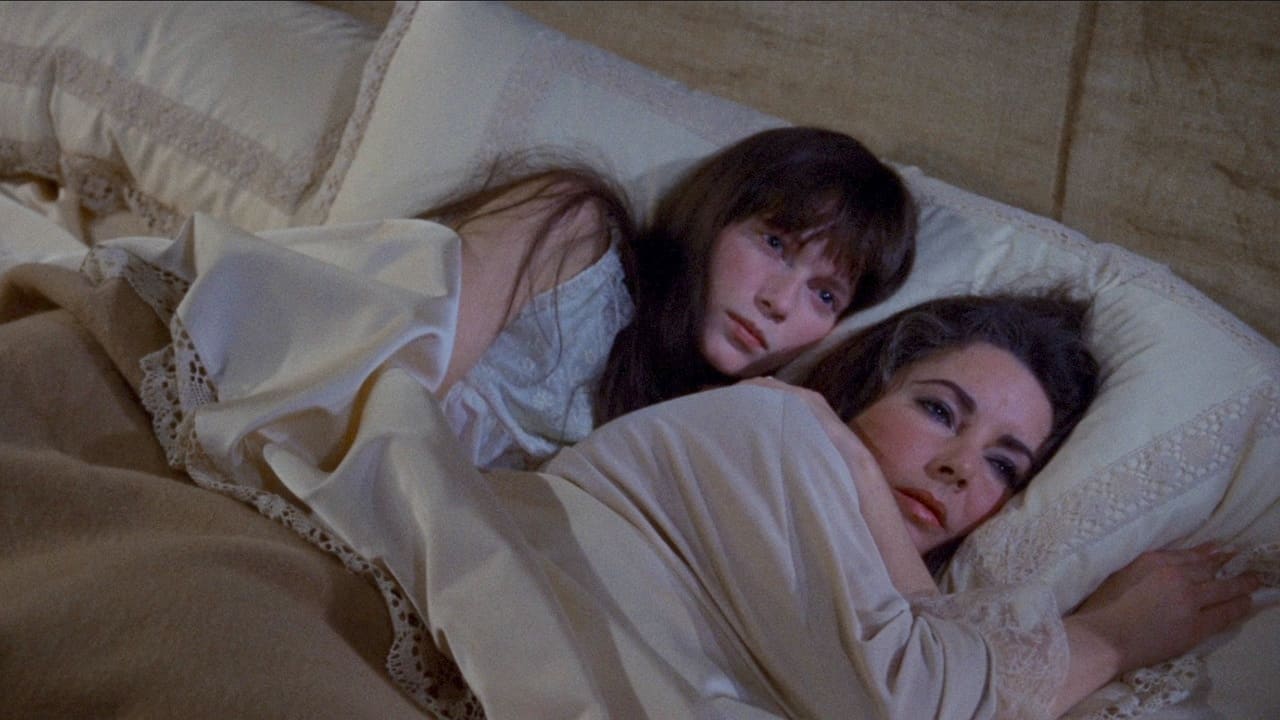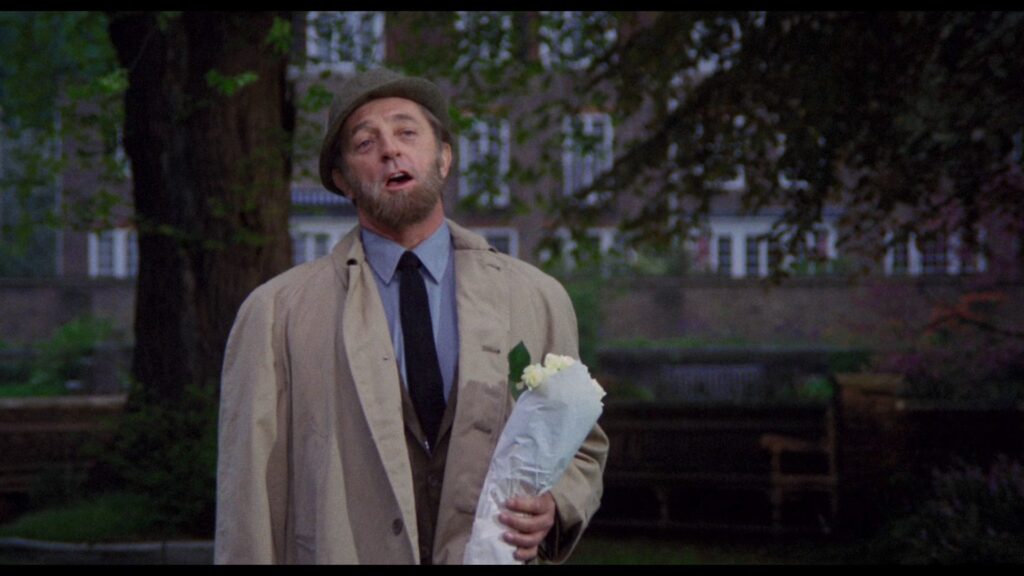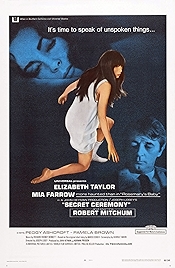At first sight bizarre, and at second sight even weirder, 1968’s Secret Ceremony is the sort of arthouse thriller that Elizabeth Taylor apparently never made. For Mia Farrow, her co-star, it looks like a warm-up for the following year’s Rosemary’s Baby. Robert Mitchum, yes Robert Mitchum, makes up the third leg of this very wonky stool.
Forget Mitchum for the moment. Who are these women, it asks and eventually answers, wrongfooting us most of the way with its story of needy co-dependence in which Taylor plays a woman called Leonora and Farrow plays Cenci (pronounced Chenchee).
The women, both dressed in black, meet on the top deck of a London double-decker bus. Cenci approaches Leonora, tears running down her face, and says one word, “Mummy”, in a girlish voice. Leonora coughs and looks away.
Getting off the bus at a cemetery, Leonora leaves a bunch of flowers on the grave of a girl, dead aged ten, of drowning. Cenci watches from a distance.
And then the two women head back to the mansion that’s possibly the key to the puzzle. Does Cenci live there alone? Why has Leonora agreed, just like that, to go back there with her? Is one of these women deranged, or maybe both of them are? Maybe Cenci is the dead daughter of Leonora in spirit form. Or possibly Leonora has gone mad with grief after the death of a child and we’re seeing events through her eyes. Perhaps the excessively girlish Cenci – in her 20s but acting like she’s about seven – is mentally challenged in some way and it’s her eyes we’re seeing this relationship through. All possibilities seem open.
“Make the noise,” Cenci demands of Leonora at one point, and the two of them fake a female orgasm in unison. At another they take a bath together in this palatial house’s vast tub. These two women who don’t know each other, or maybe do.
To one side, like wind-up toys, a pair of Cenci’s dotty aunts, played by Peggy Ashcroft and Pamela Brown, make irregular appearances. They also seem unsure of the relationship between the two women. Leonora is dead, they maintain, but this woman, whose name might really be Margaret and might also be Leonora’s cousin, does look an awful lot like her.
Eventually Mitchum turns up, in a beard, as a wayward ex-husband, bad dad and randy academic. He sheds some light on matters while adding a twist. Leonora is definitively not his Leonora – her breasts are not as good for a start, he gallantly explains – and Cenci is not his daughter, and never was. Which means that his sexual relationship with Cenci, his stepdaughter, was above board. This at least partly explains an earlier scene where Cenci playacted a child being sexually abused by her father, which Leonora (or Margaret) accidentally saw through a window. Yes, quite.
The house though. Known originally as the Peacock House, on account of its extensive use of decorative blue and green Arts and Crafts tiling. It’s a late pre-Raphaelite palace in London’s swish Holland Park. Director Joseph Losey lavishes attention on this spectacular, over-decorated mansion, a cod-medieval fantasy for the very very rich.
This is undoubtedly a bizarre and frustrating film, a gothic psychological melodrama with key details left out. As so often with Losey (see The Servant) distorted power relations and upended social status are in the mix somewhere, while the pre-Raphaelite house possibly suggests a connection between Leonora’s drowned daughter and John Everett Millais’s famous painting of a drowned Ophelia. This is possibly a stretch too far, but in the absence of anything else…
Losey conjures away, layering on the gloomy gothic atmosphere suggesting we’re in some 1960s version of an 1860s fantasy of the imaginary medieval era. DP Gerry Fisher’s lighting is often murky, as if we’re in a pre-electric age. Richard Rodney Bennett’s score is atonally unsettling. We’re between the non-sequiturs of Waiting for Godot and the watery negotiations of Don’t Look Now, with just a dash of Kafka.
The plot does eventually partly explain itself, but never entirely satisfactorily. Instead enjoy the performances. All really fine. Taylor is a familiar mix of the sleek, the batshit, the drunken and the grande dame. Farrow gambols about unsettlingly like a child and is as ambiguous as hell – is this her best performance? Mitchum has less to do, but does it well. Enter, unhinge things a bit more than they already are, and then leave. Which is really the entire film in a nutshell.
Secret Ceremony – Watch it/buy it at Amazon
I am an Amazon affiliate
© Steve Morrissey 2023


